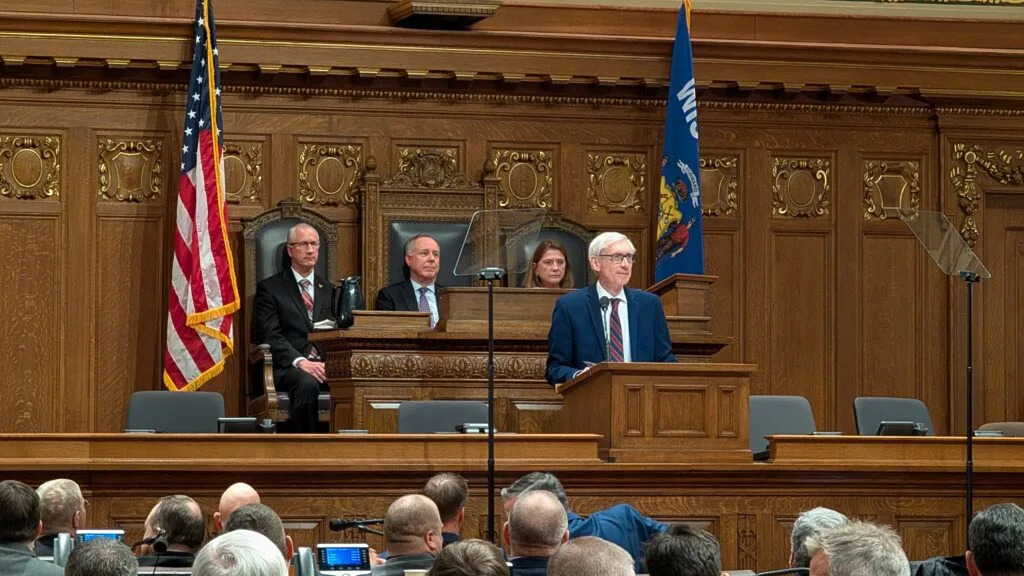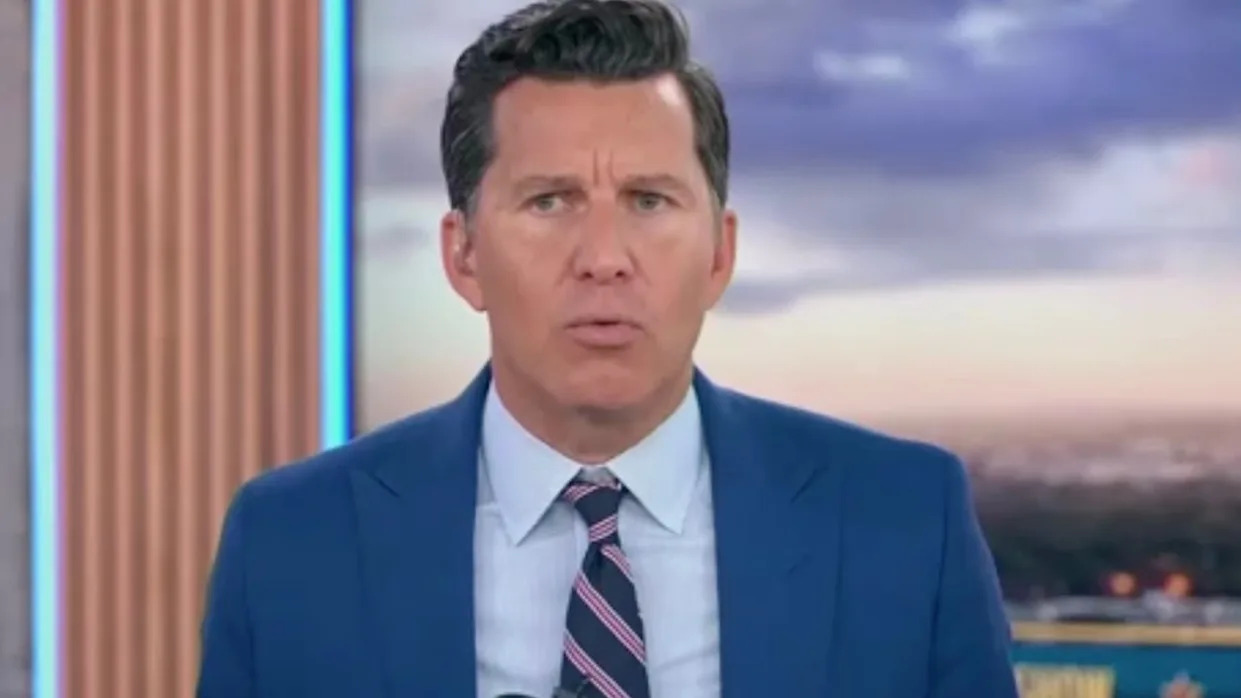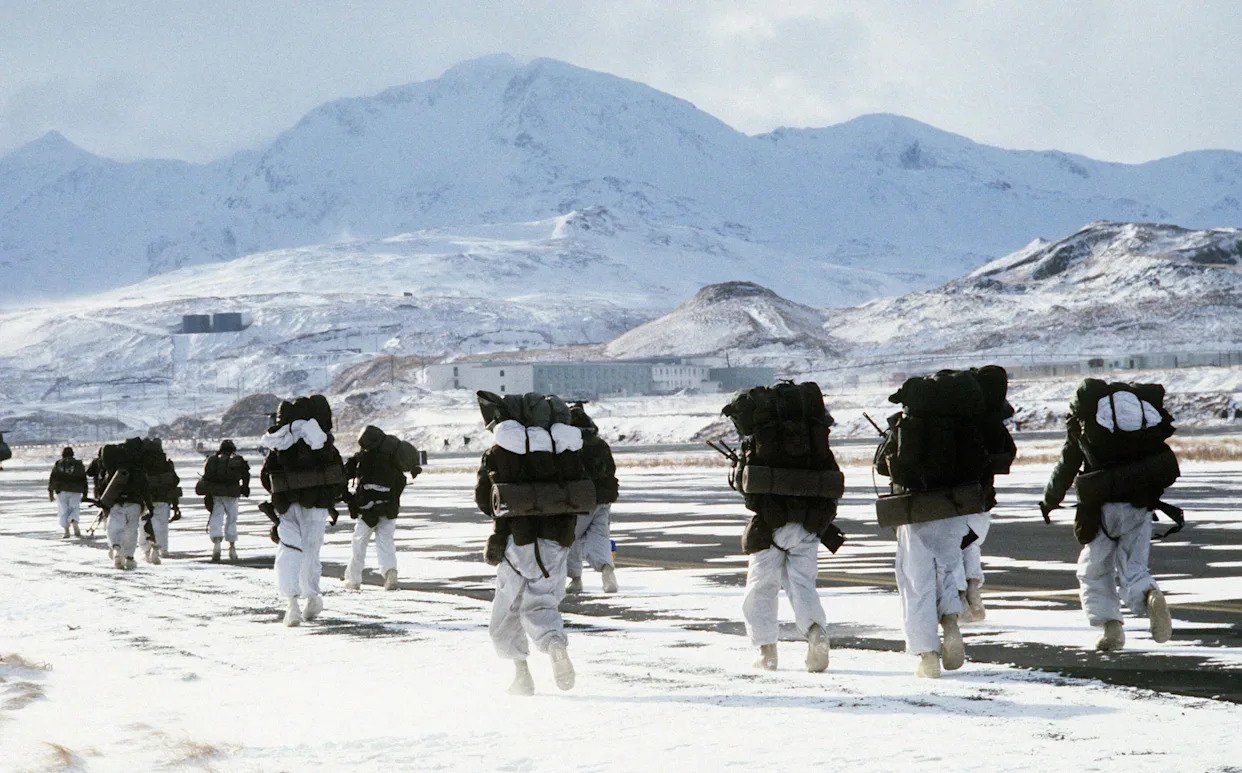
Gov. Tony Evers delivers his 2025 state budget address in February. The bipartisan budget Evers signed in July spends down much of Wisconsin's budget surplus. (Photo by Baylor Spears/Wisconsin Examiner)
Wisconsin could be facing a more difficult budget than it has seen in recent years with recently approved spending and tax cuts consuming most of the state’s historic surplus, according to the nonpartisan Wisconsin Policy Forum.
The research organization described the state’s most recent budget as an “all of the above” plan in its recent report. Mark Sommerhauser, communications director and policy researcher at the Wisconsin Policy Forum, said the previous budgets showed more restraint from policymakers when it came to spending and tax cuts.
“There were some tax cuts, there were some spending increases, but certainly not of the magnitude that could have occurred,” Sommerhauser told the Wisconsin Examiner in an interview. “In this budget, we saw a lot more of both.”
Sommerhauser said it was “clearly a budget that was much more focused on the here and now than on where the state’s finances would be in two or four years.”
“There’s an argument that ‘hey, this money should be returned, either back to taxpayers or spent on programs that benefit our state’s residents, rather than just sitting in the general fund,” Sommerhauser added. “That’s what policymakers opted to do with this budget.”
The $111 billion state budget passed by the state Legislature and signed into law by Gov. Tony Evers in early July increased spending by 7.7% — an increase of $3.3 billion — allocating $46 billion to fund a number of priorities.
The budget also included more than $1 billion in tax cuts over the next two years.
One major cut comes from a change to Wisconsin’s income tax brackets. The new budget expands the state’s second tax bracket, with a 4.4% tax rate, and shrinks the third bracket, which has a 5.3% rate. Wisconsin residents on average will see a $188 cut per filer — affecting more than 1.5 million tax returns. Sommerhauser described the change as a “modest but still notable income tax cut for almost everybody that has some degree of income tax liability, except those folks that have very, very little.” The change will cost the state about $320 million in each year of the budget.
The second major cut created an exemption from income taxes for the first $24,000 for single filers over 67 and $48,000 in retirement income for married filers over 67.
The new state spending in the budget covers an array of priorities including over $500 million for special education, over $80 million in state general purpose revenue for the University of Wisconsin system, over $380 million for wage increases for state employees and additional funding for child care.
Most Republican lawmakers voted for the budget apart from four Senate Republicans and one GOP Assembly member, celebrating the tax cuts as well as some of the investments in the budget and hailing it as a compromise. Most Democrats voted against the final proposal, saying it inadequately invested in education, child care and other priorities, though five Senate and seven Assembly Democrats joined Republicans in support.
With this budget, the state has now used most of the surplus that has formed the backdrop for the last few budgets. The surplus, Sommerhauser said, was mostly the result of federal pandemic aid and was also created in part by an increase in tax revenue, especially through the sales tax, as a result of inflation. At one point the surplus had grown to over $6 billion.
“[A large surplus is] not business as usual in Wisconsin,” Sommerhauser said. “More often you see the opposite. You see shortfalls that lawmakers are having to scramble to figure out a way to bridge.”
Sommerhauser said that with the smaller reserves, the next budget is likely “going to be kind of coming back to Earth.”
By July 1 2027, Wisconsin’s general fund balance is projected to be $770.5 million — a drop of about $3.6 billion and the lowest balance since 2018. The state will also have $2.1 billion in its rainy day fund.
This leaves Wisconsin with a projected $2.8 billion in its reserves — about 11% of Wisconsin’s net general fund appropriations in fiscal year 2027, Sommerhauser said.
“That’s certainly not disastrous. It’s not cataclysmic at all. It is more than the state has had in reserve for many years prior to the pandemic,” Sommerhauser said. “Of course, it’s a lot less than the last couple of budgets here.”
Wisconsin isn’t the only state to be on this trajectory. At its annual summit in early August, the National Conference of State Legislatures (NCSL) gave an overview of state budgets and asked whether it is time for states to “tighten the belt.”
Erica MacKellar, program principal of NCSL’s Fiscal Affairs Program, said during the presentation that, overall, states ended fiscal year 2025 in a “fairly strong position.” Looking back to the pandemic, she said state revenues didn’t take as big a hit as they were initially expecting.
“As states recovered, they unexpectedly saw these big revenue surpluses, and that was due to a number of factors, including the large amount of aid that the federal government sent to states,” MacKeller said. “Revenue growth jumped to around 15%, but states always knew that that level of growth was really unsustainable, and have been really planning for a return to normal of state revenue growth and a revenue slowdown that I think we’re seeing now.”
MacKeller said that prior to the pandemic, state year-end balances as a percentage of state spending were about 10% on average — an increase from the low of about 4% during the Great Recession.
“In fiscal year 2023, after we saw those record surpluses, that percentage soared to over 30%, and now that number has started to come back down,” MacKeller said. “The preliminary average from our survey shows about 16[%] for fiscal year 2025, so that’s putting most states on pretty firm footing at this point.”
Sommerhauser said the bigger issue now is that Wisconsin is spending more than it brings in through taxes — creating a projected structural deficit. He said it’s something policymakers will have to grapple with in the coming years.
Under the new budget, the state’s general fund will spend about $24.4 billion and bring in $23.1 billion in tax revenues in 2027. The projected gap “would be one of the largest of the past generation,” according to the Wisconsin Policy Forum.
The state could use the reserves for the additional spending, but it wouldn’t be a long-term solution, Sommerhauser said.
“The state can do that on a one-time basis if it’s got a bunch of money in the bank, which it does right now,” Sommerhauser said. “The issue with that is that you can only spend that money in the bank one time.”
If spending and revenue remain the same, Wisconsin would have an imbalance of -$727 million and an imbalance of -$1.4 billion by the end of 2028-29, according to the Legislative Fiscal Bureau.
Sommerhauser noted that unlike the federal government, Wisconsin can’t run a huge deficit year after year. The state constitution requires lawmakers pass and the governor sign a balanced budget.
“The state can do these things, whether it’s drawing money out of reserves or sometimes there are other little tricks that the state can kind of pull out of its hat on a one-time basis,” Sommerhauser said. But, he added, “if your ongoing revenues are significantly out of alignment with your ongoing tax revenues, you’re gonna have a headache to deal with every two years, and you’re setting yourself up to have some really challenging budgets that could eventually make you have to do something really, really painful — whether it’s a big tax increase or some sort of big spending cut.”
If your ongoing revenues are significantly out of alignment with your ongoing tax revenues, you're gonna have a headache to deal with every two years. . .
– Mark Sommerhauser, Wisconsin Policy Forum
Sommerhauser said the Great Recession was the point in recent memory when the state dealt with the greatest budget shortfalls.
“There were some significant tax increases that were put into place in 2009, when we had Democratic controlled state government,” Sommerhauser said. During the 2009-2010 budget (the last time there was a Democratic trifecta), former Gov. Jim Doyle and the Legislature created a new tax bracket of 7.75% on married couples filing jointly with taxable income above $300,000 to help close the budget gap the state was facing. The state’s highest bracket is currently 7.65%.
“You had the big election in 2010 where everything flipped, and then you have Gov. [Scott] Walker and Act 10, and everything happening in 2011 which brought about some really large spending cuts in the state,” Sommerhauser said. At the time, Walker’s administration was projecting the state would have a $3.6 billion deficit and the Republican trifecta took the route of drastically cutting public employee benefits to address it.
“We obviously are hopeful that we’re not going to see a recession again anytime soon… but this is our best sort of attempt to give a sense of what the Legislature might be needing to grapple with in two years,” Sommerhauser said.
The partisan composition of Wisconsin’s state government could also look quite different by the next budget.
Evers announced that he won’t be running for reelection just a few weeks after wrapping up the 2025-27 state budget, making the 2026 election the first open race since 2010.
The Republican and Democratic fields of candidates are still shaping up. Some of the announced candidates have made comments signaling what they would like to see from a budget.
Lt. Gov. Sara Rodriguez, the first Democratic candidate in the race, has said she would invest additional state funding in Wisconsin’s schools. Republican Washington Co. Executive Josh Schoemann has said the recent budget spends too much and is taxing people too much. Republican U.S. Rep. Tom Tiffany, who is still considering a run, noted the potential deficit on social media when he said that Wisconsin “must change course before we end up like MN and IL.”
The state Senate and Assembly will also be up for grabs in 2026.
Sommerhauser said it’s likely the next governor and state Legislature could be dealing with a challenging state budget, though it’s still unclear how challenging.
“If economic growth is really strong for the next two years, we could be in a position where we have a projected shortfall, but it’s quite manageable… That’s kind of the best case scenario,” Sommerhauser said. “Worst case scenario is if we would see a recession in the next couple of years, that could be setting us up for a very challenging budget.”
SUBSCRIBE: GET THE MORNING HEADLINES DELIVERED TO YOUR INBOX







Comments